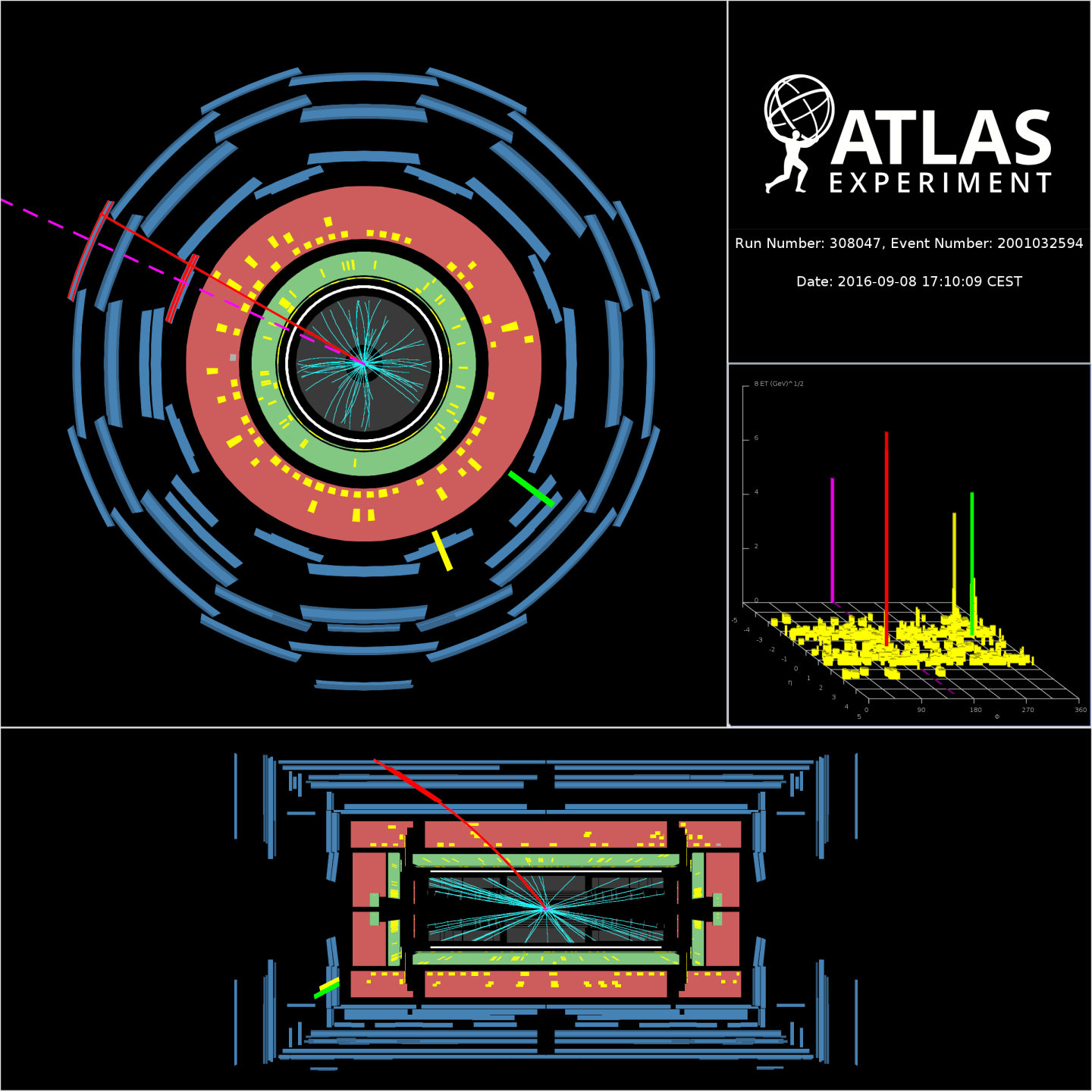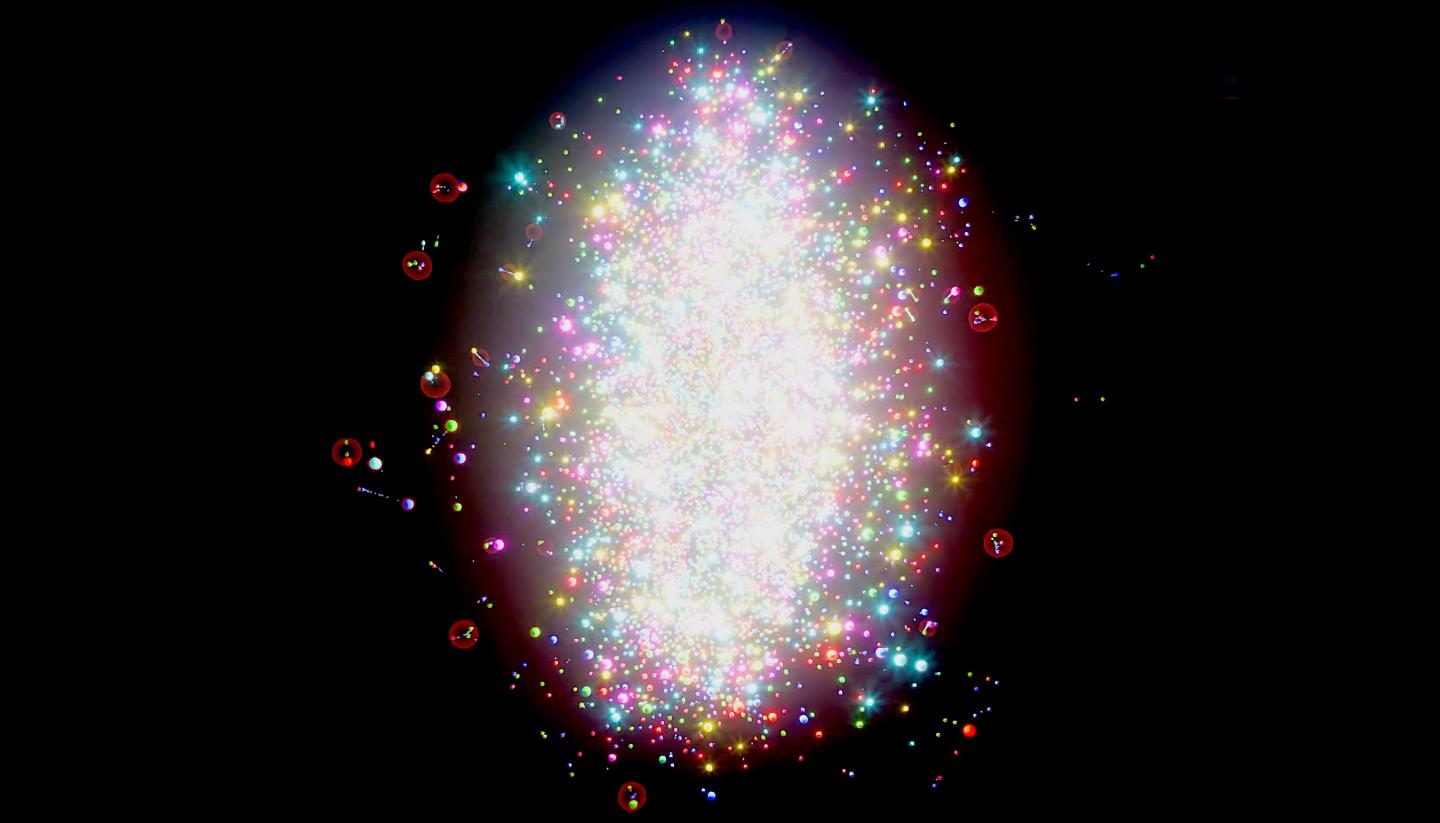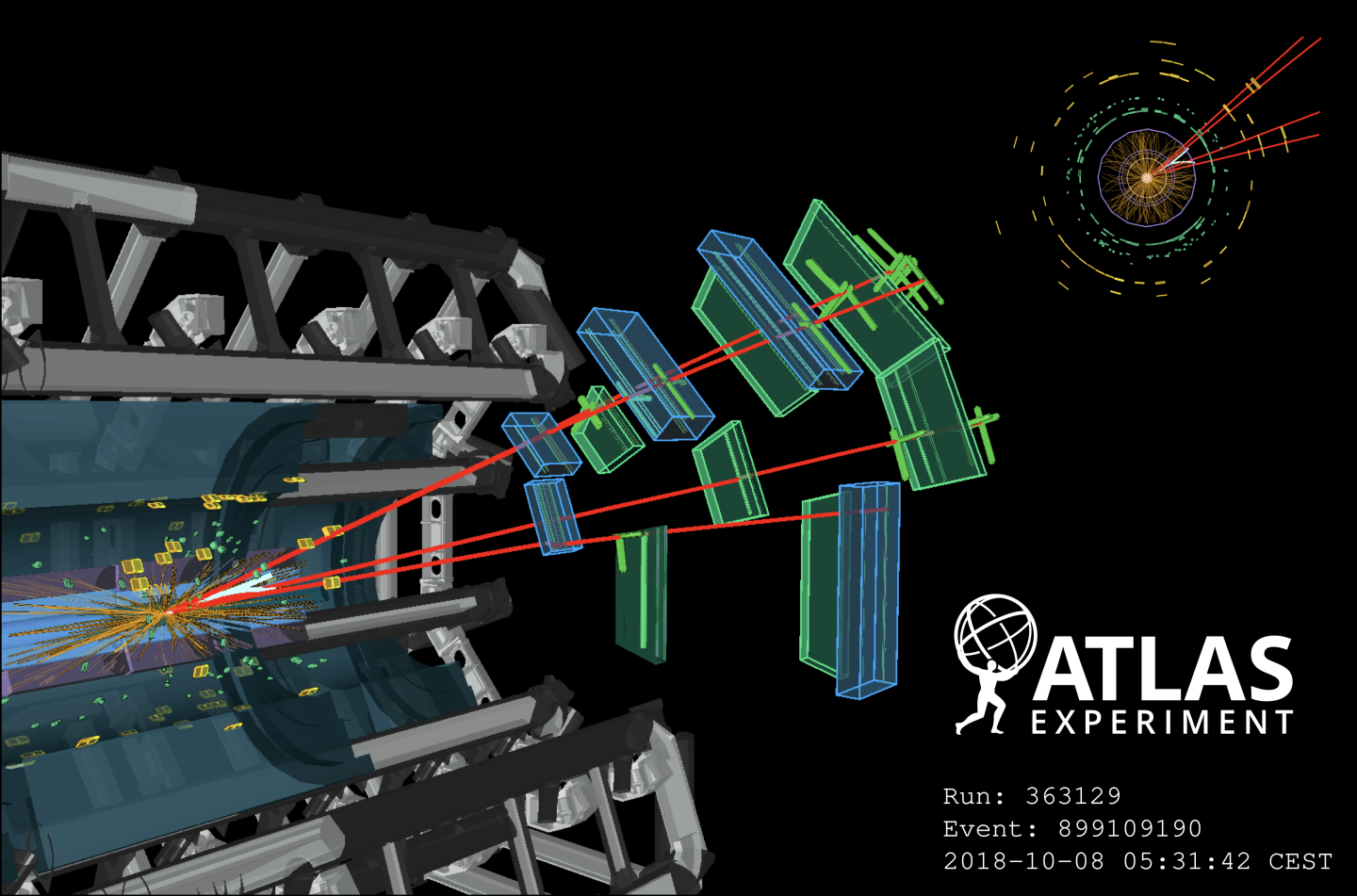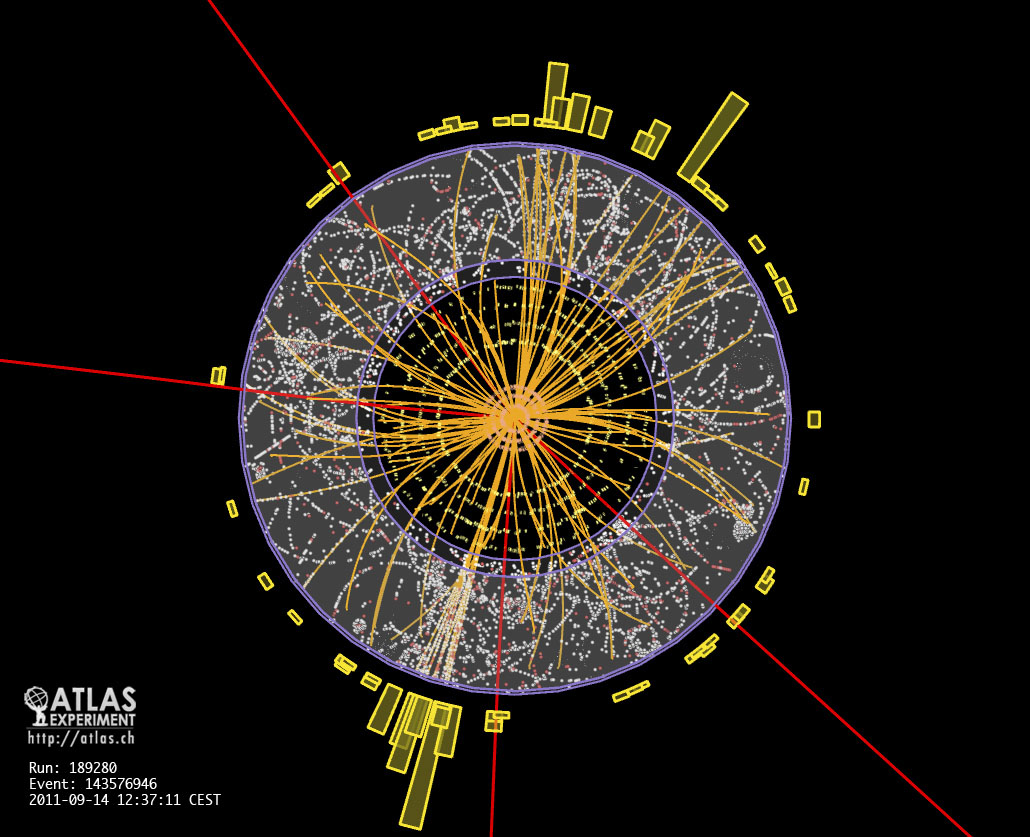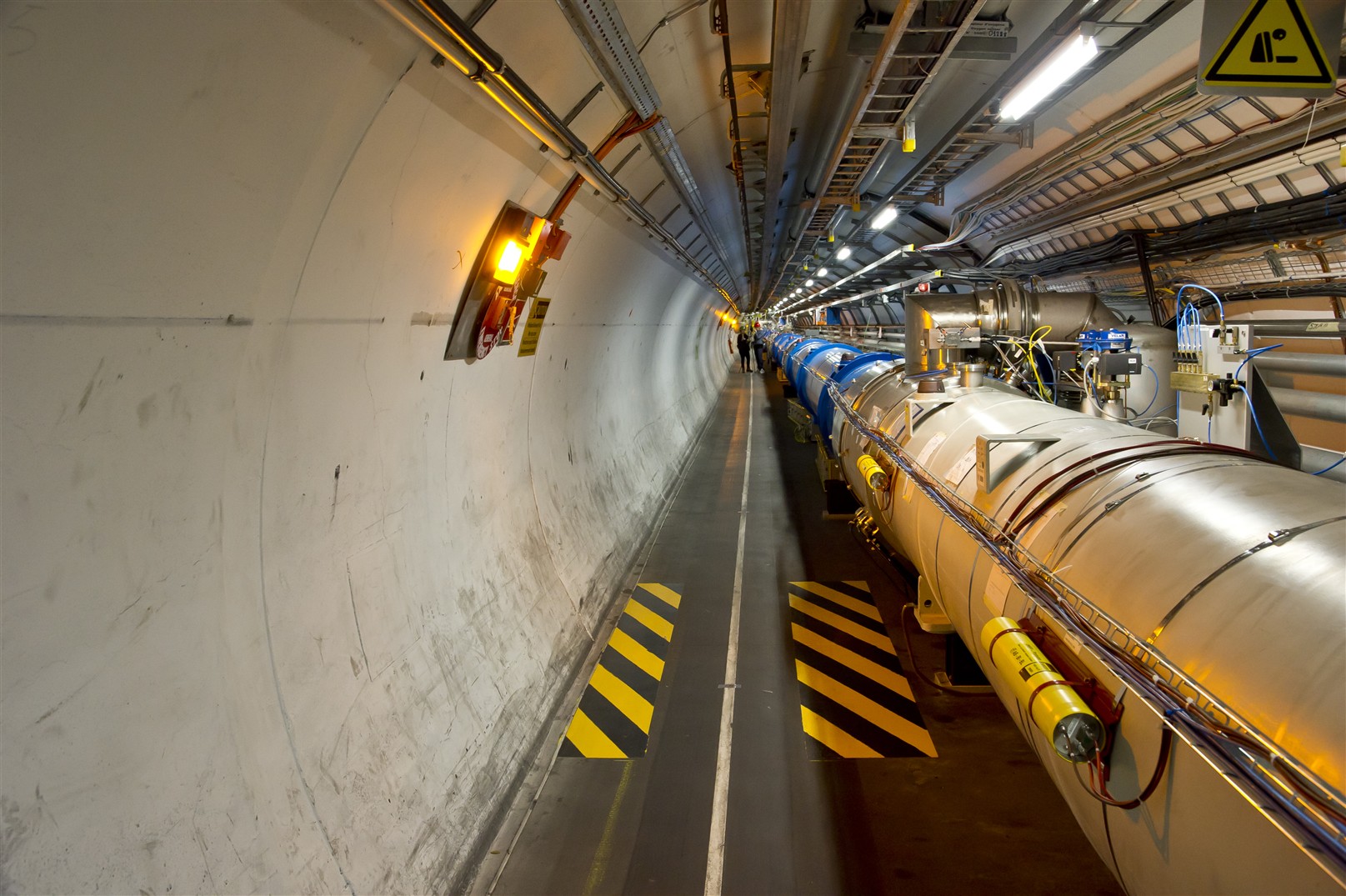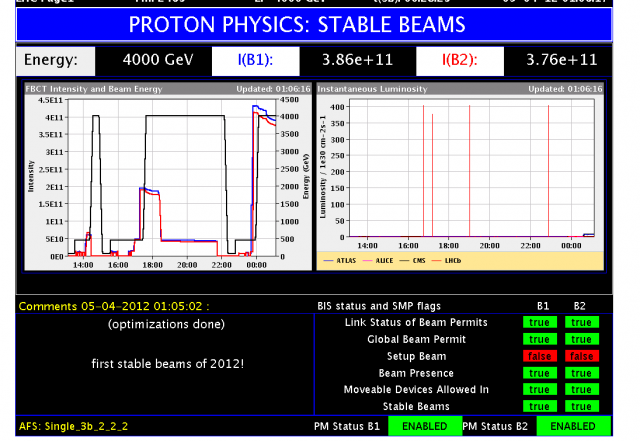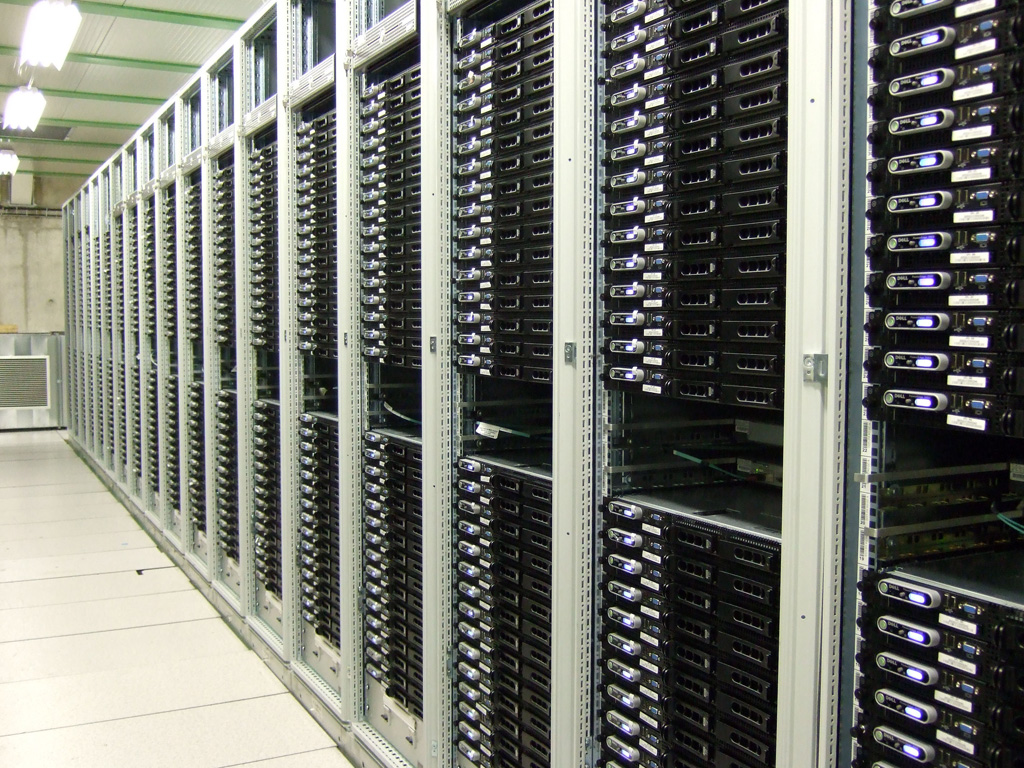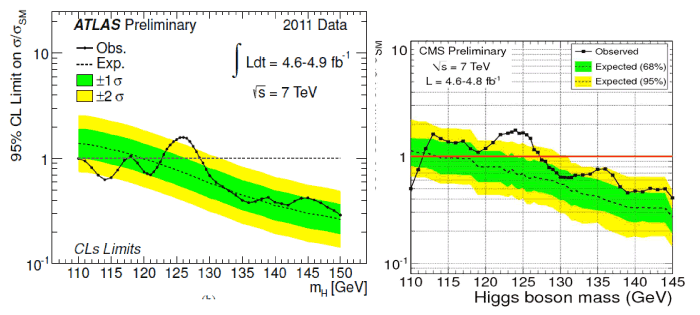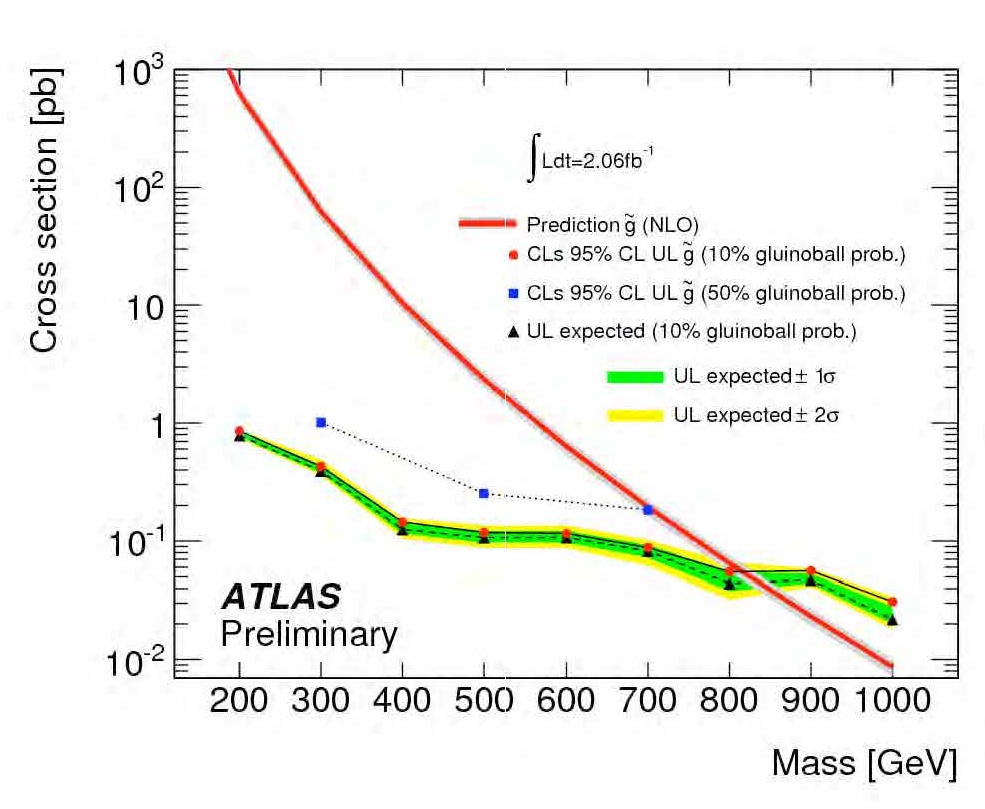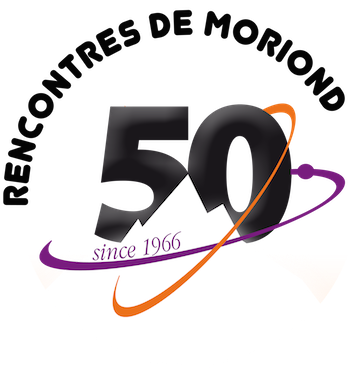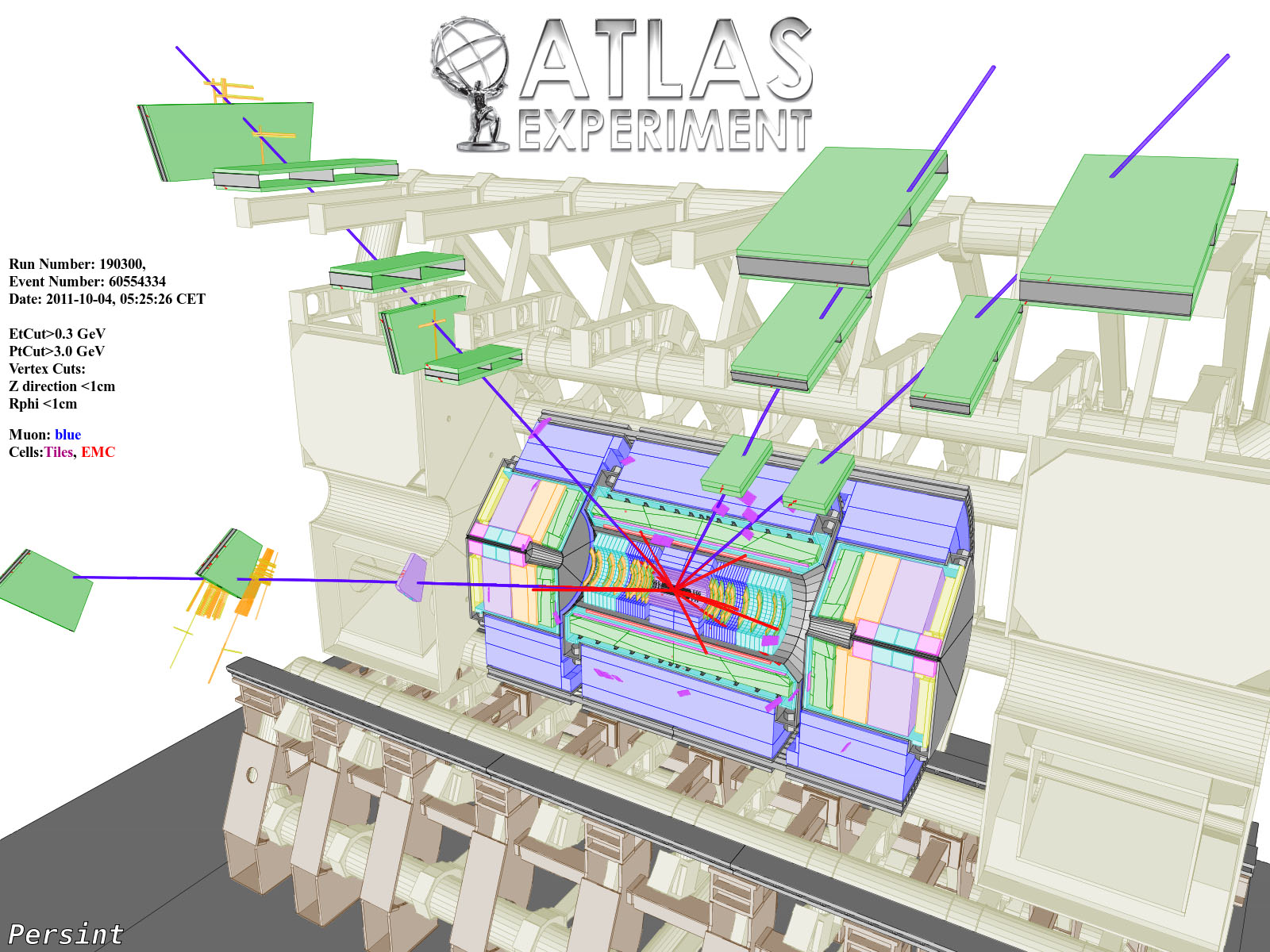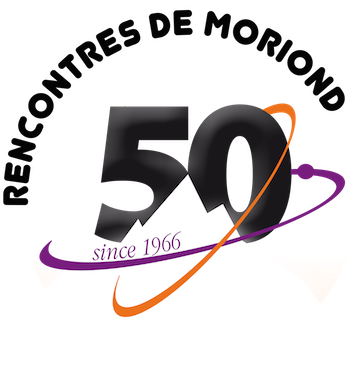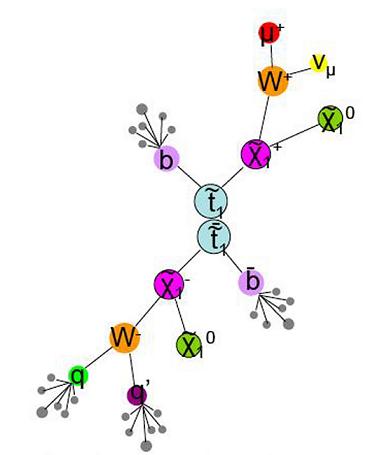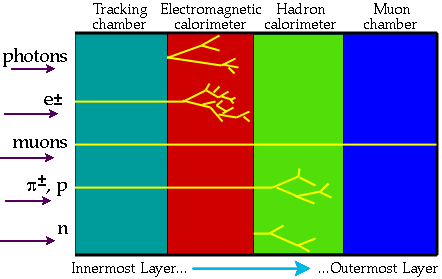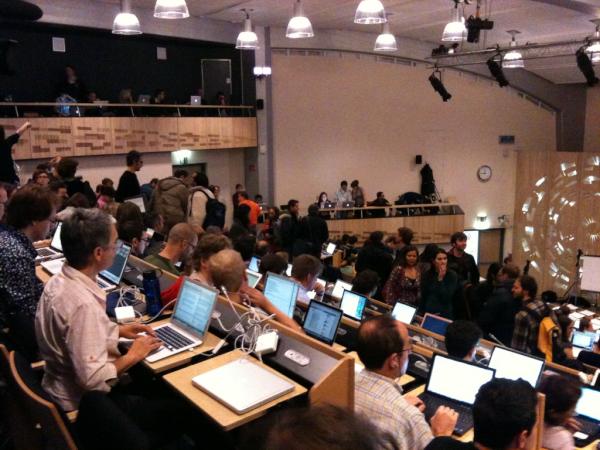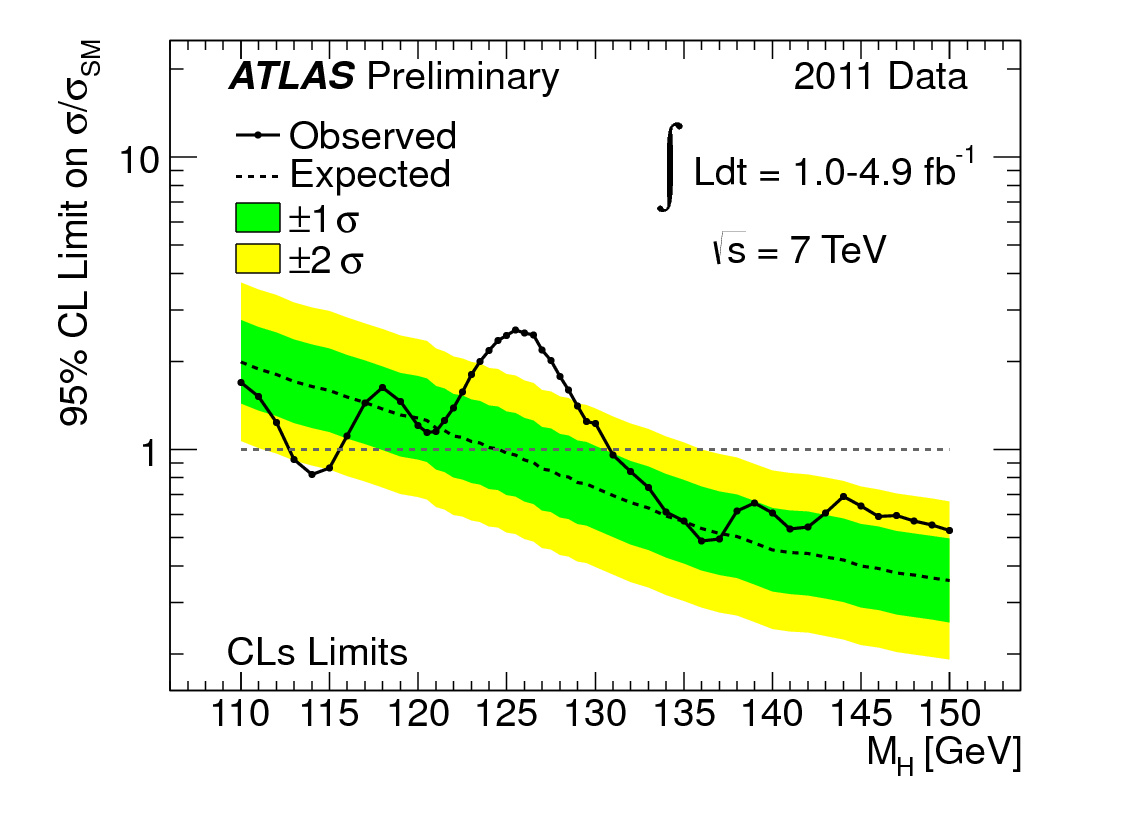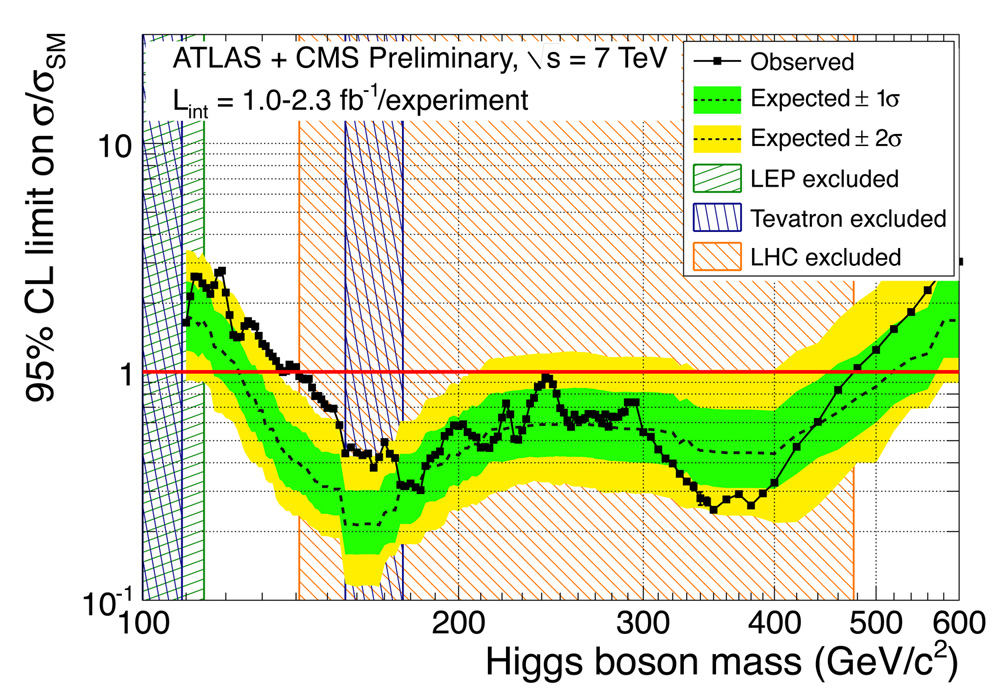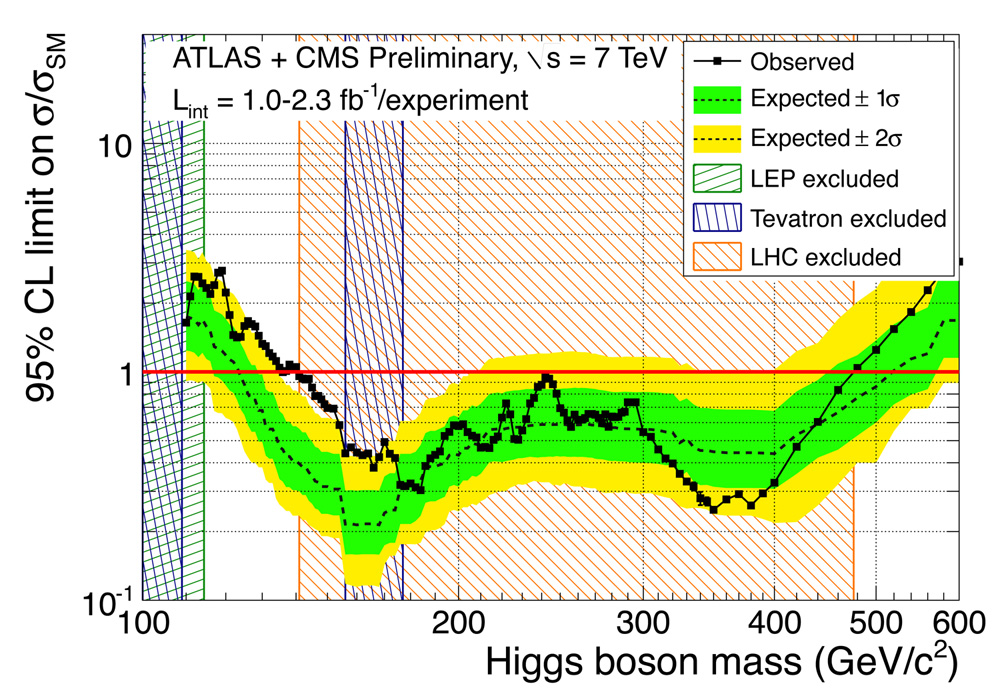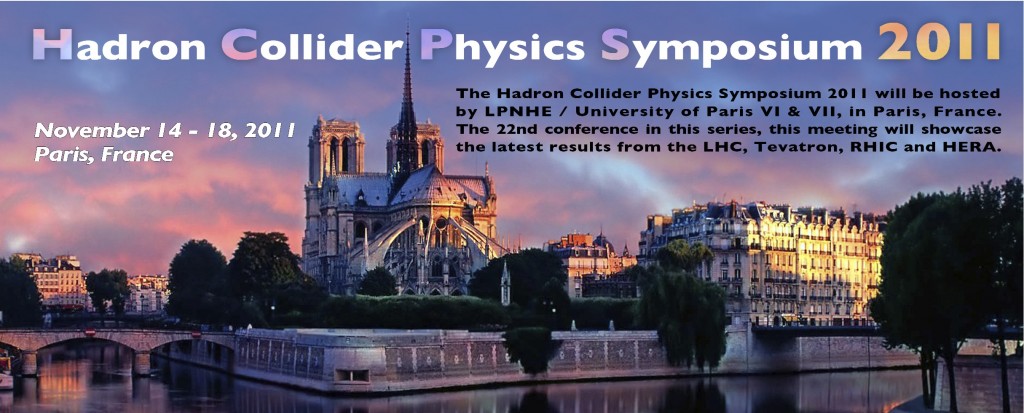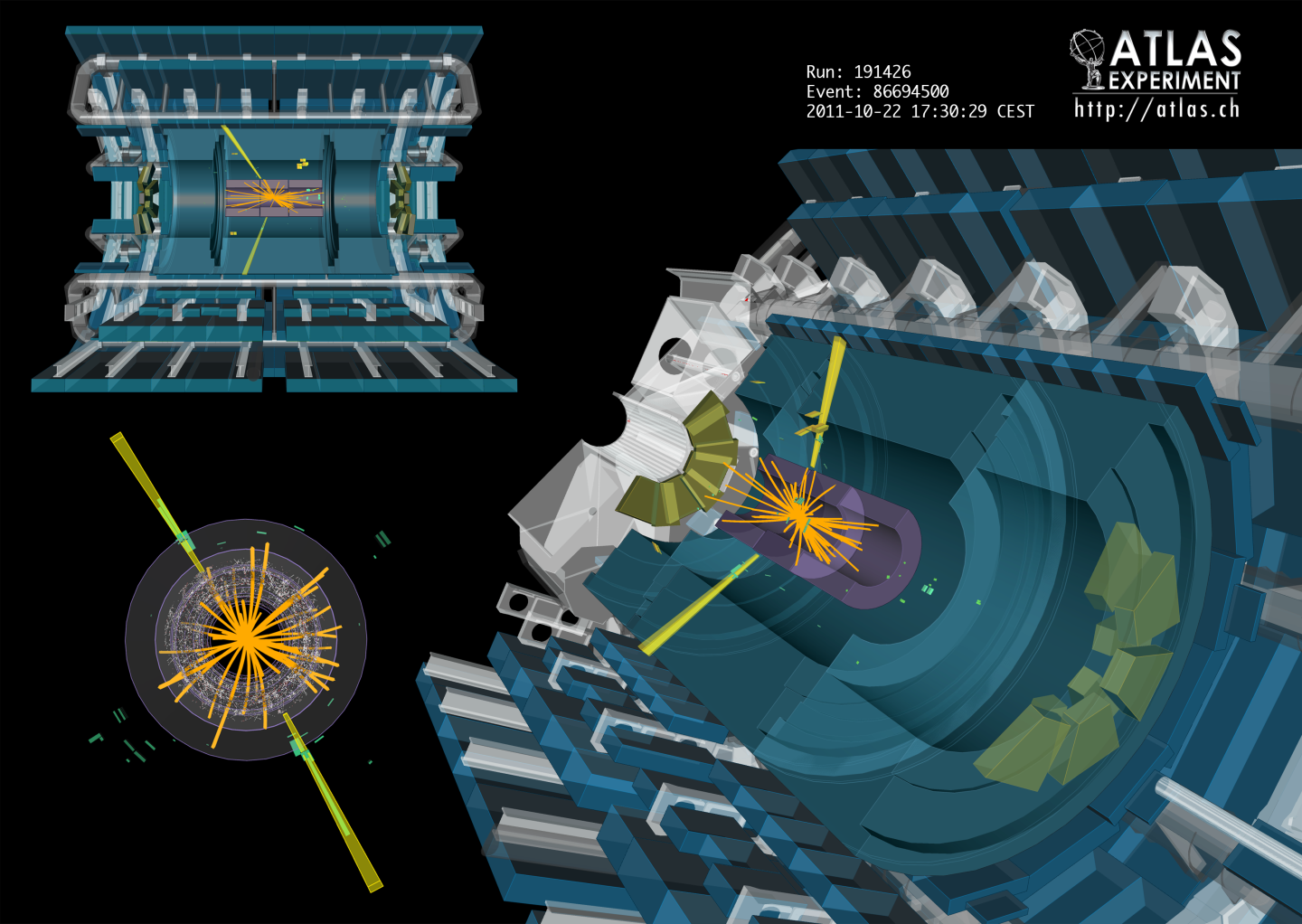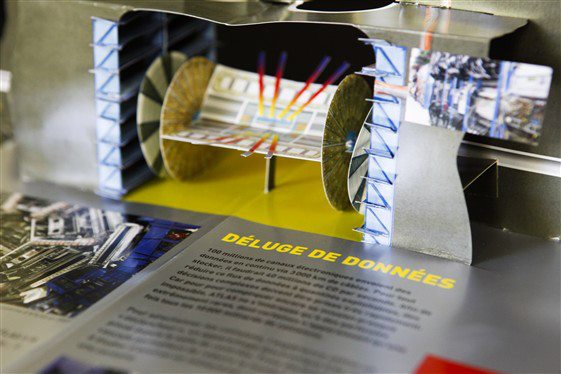ATLAS to Present Updated Higgs Analysis Results in Upcoming Joint CERN / ICHEP Seminar
The ATLAS Experiment will be presenting its most recent results from searches for the Higgs Boson at the LHC in a dedicated seminar to be held at CERN on 4 July at 9:00 CET.
News |
Quark Excitement: Is there anything smaller?
The Large Hadron Collider commands many superlatives. One of the most useful of these is that the LHC is our planet's most powerful human-built microscope. The higher the collision energy, the tinier the distances you can study.
Blog |
What does 8 TeV mean?
Inspired by Regina Caputo’s excellent post on the CERN accelerator complex, I thought I should give you some fun facts about the LHC (in “human units”).
Blog |
LHC 2012 Run at 8 TeV Has Started
The LHC 2012 run at a beam energy of 4 TeV has started, corresponding to a collision energy of 8 TeV, compared with the 7 TeV runs in 2010 and 2011. The data target for 2012 is 15 inverse femtobarns for ATLAS (and CMS), three times larger than the total until now. The LHC is scheduled to enter a long technical stop at the end of 2012 to prepare for running at its full design energy of around 7 TeV per beam.
Needle in a haystack
The LHC is designed to collide bunches of protons every 25 ns, i.e., at a 40 MHz rate (40 million/second). In each of these collisions, something happens. Since there is no way we can collect data at this rate, we try to pick only the interesting events, which occur very infrequently; however, this is easier said than done. Experiments like ATLAS employ a very sophisticated filtering system to keep only those events that we are interested in. This is called the trigger system, and it works because the interesting events have unique signatures that can be used to distinguish them from the uninteresting ones.
Blog |
Moriond day 3: The day of the Higgs
(I'm not skipping day 2, about heavy flavors and my own talk, but I think today's topic merits a reshuffling)
Blog |
Moriond day 2: Inverse time dilation
I work with crazy particles. Dark matter is pretty weird, so are neutrinos seemingly, but what I search for blows it all away. Tuesday was the day of my presentation. The format for these young scientist presentations are 5 minutes and time for a single question afterwards. Trying to present a full picture of any analysis in that short a time is impossible; instead the idea is more like handing out a business card telling the audience what you work on in the hope that some will be interested and contact you informally afterwards.
Blog |
Moriond day 1: The outer limits
Not many trips take you to all ends of the world in one day, but that was nevertheless how it felt after the first talks at Moriond. Sunday and Monday have mainly featured presentations on neutrino and dark matter physics. Many of these experiments are placed in remote regions or deep under ground.
Blog |
Mountains of Physics
Experimentalists and theorists are gathering once more in the Alps at La Thuile, Italy, March 3-17 for the annual "Rencontres de Moriond" to discuss latest results in particle physics and cosmology.
News |
Mystical Moriond
As a young physicist not many conferences have the same mystical status as Rencontres de Moriond. This gathering of physicists from all areas of particle physics is one of most anticipated events of the year. More a gathering than a conference, Moriond started in 1966 and has inspired many similar events. Presentations, time for discussion and recreation is combined to inspire and foster collaboration and new ideas. Another element is the meeting between young and more experienced scientists. Nearly half of the talks are given by young participants below 35 like myself. I was invited by the ATLAS collaboration to present our latest results on a search for a type of long-lived particles that has meant a lot to me for the last two years.
Blog |
From 0-60 in 10 million seconds! – Part 2
This is continuing from the previous post, where I discussed how we convert data collected by ATLAS into usable objects. Here I explain the steps to get a Physics result. I can now use our data sample to prove/disprove the predictions of Supersymmetry (SUSY), string theory or what have you. What steps do I follow?
Blog |
From 0-60 in 10 million seconds! – Part 1
OK, so I’ll try to give a flavour of how the data that we collect gets turned into a published result. As the title indicates, it takes a while! The post got very long, so I have split it in two parts. The first will talk about reconstructing data, and the second will explain the analysis stage.
Blog |
7 or 8 TeV, a thousand terabyte question!
A very happy new year to the readers of this blog. As we start 2012, hoping to finally find the elusive Higgs boson and other signatures of new physics, an important question needs to be answered first - are we going to have collisions at a center of mass energy of 7 or 8 TeV?
Blog |
Tweeting live #Higgs boson updates from #CERN
“If it’s just a fluctuation of background, it will take a lot of data to kill.” Dr. Fabiola Gianotti, spokesperson for the ATLAS collaboration, made this statement on Dec. 13, 2011 during a special seminar I attended at CERN. Within the minute that followed, I hurriedly concocted a tweet, tacked on #Higgs and #CERN hashtags, and sent Fabiola’s weighty comment out onto the WWW.
Blog |
Higgs search papers submitted for publication
The results on Standard Model (SM) Higgs searches that ATLAS reported at a CERN seminar on December 13, 2011, have now been submitted for publication in three papers.
News |
ATLAS discovers its first new particle
The ATLAS collaboration has announced the discovery of the χb(3P), which is a bound state of a bottom quark and bottom antiquark (bbar).
News |
ATLAS experiment presents latest Higgs search status
The latest update of the ATLAS searches for the Standard Model Higgs boson was presented at a CERN seminar on December 13, 2011. As stated in the CERN press release, the new ATLAS and CMS results are "sufficient to make significant progress in the search for the Higgs boson, but not enough to make any conclusive statement on the existence or non-existence of the elusive Higgs. Tantalising hints have been seen by both experiments in the same mass region, but these are not yet strong enough to claim a discovery."
The ATLAS and CMS combination of Higgs search results
The Higgs Boson is the only missing piece in the Standard Model of particle physics and its search is undoubtedly one of the most important searches in the history of physics. The Higgs boson is the generator of all elementary particle masses in nature. The mass of the Higgs boson itself is unknown, and before the LHC it was searched for in previous experiments but not found. LHC experiments have produced excellent results since the start of the data taking. In ATLAS and CMS a discussion was initiated about a year ago to combine the Higgs search results from both experiments. The framework and the procedure to combine results had to be defined and agreed upon before the combined analysis could proceed.
News |
What if there is no Higgs boson?
Physicists are confident they will soon be able to answer a fundamental question at the LHC: how do particles acquire mass? The simplest answer, the one given in the Standard Model of the fundamental particles, is that a single particle, the Higgs boson, endows the other particles and itself with mass. The Higgs boson does this by means of the "Higgs mechanism", which involves breaking a symmetry that would leave all Standard Model particles massless if it were not broken. However the Higgs boson is not the only way the Higgs mechanism might work.
News |
Joining forces in the search for the Higgs
Today we witnessed a landmark LHC first: At the HCP conference in Paris, friendly rivals, the ATLAS and CMS collaborations, came together to present a joint result! This ATLAS-CMS combined Higgs search was motivated by the fact that pooling the dataset increases our chances of excluding or finding the Higgs boson over those of a single experiment. This is the first example of this kind of scientific collaboration at the LHC, and the success of the whole endeavor hinged on a whole host of thorny issues being tackled…
Blog |
ATLAS and CMS combine summer '11 search limits on the Standard Model Higgs
Perhaps the most anticipated result of the LHC involves the search for the Higgs boson, the only particle predicted by the Standard Model (SM) that has not yet been seen by experiments. The Higgs boson helps explain how elementary particles acquire mass. If the SM Higgs boson exists it will be produced at the LHC and swiftly decay into various known and well-studied particles, with the dominant decay products depending on the actual Higgs mass. ATLAS and CMS search for the SM Higgs boson using a range of decay products: two photons; two tau leptons; two b quarks; two W bosons; and two Z bosons. Analysing all these channels ensures that the search is sensitive to observing the Higgs irrespective of its mass.
News |
Charming results that have got everybody thinking…
I’m writing from the annual Hadron Collider Physics Symposium, which began on Monday in Paris, France. It’s organised jointly by LPNHE and the University of Paris VI & VII, with an excellent location right in the heart of the Latin Quarter. HCP is a fun conference with only plenary talks, which means that I’ve had the chance to attend talks on a wide range of subjects including many quite remote from my usual areas of expertise.
Blog |
The power of perception
If you ask a child to draw a physicist, they’ll usually draw you a disheveled man in a lab coat. But looking around the hundreds of physicists eating lunch at CERN today, I saw many women, only one or two that could be classified as disheveled, and zero lab coats. Yet this image persists.
Blog |
ATLAS reveals latest results at HCP11
The ATLAS Experiment presented its latest results at the Hadron Collider Physics Symposium 2011 in Paris, France (14-18 November). Many of the most recent searches and analyses are based on more than double the data available at the last big conference in August.
News |
ATLAS in Paris for a pop-up launch
It’s not every day you get to explain ATLAS to a group of journalists with just a pop-up book as a prop. But, as some readers might already know, this is no ordinary pop-up book. ATLAS and the LHC leap from the page in incredible detail thanks to paper engineer Anton Radevsky’s wonderful designs. A new edition of the book has just been released in French, so at the end of last month I found myself travelling in to the centre of Paris from Orsay for the press launch.
Blog |


